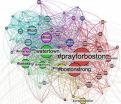(Press-News.org) BUFFALO. N.Y. — Cognitive scientists may have produced the strongest evidence yet that humans have separate and distinct cognitive systems with which they can categorize, classify, and conceptualize their worlds.
"Our finding that there are distinct, discrete systems has implications for the fields of child development and cognitive aging," says lead researcher, cognitive psychologist J. David Smith, PhD, of the University at Buffalo.
"These distinct systems may have different developmental courses as the cortex matures," he says, "meaning that children may categorize differently than adults, using different systems at different ages. This would have educational and training implications in cases of developmental disability."
He says the systems also may have different courses of decline in cognitive aging, which would have ramifications for remediation and compensation in dementia.
The study "Deferred Feedback Sharply Dissociates Implicit and Explicit Category Learning," was conducted by Smith and colleagues at UB and at the University of California at Santa Barbara. It was published in the Feb. 7 edition of the journal Psychological Science.
The age-old question of whether humans have discrete cognitive systems operating on different levels that are more or less conscious, more or less available to introspection, and so forth, has been debated for years.
"This issue of whether there are separate cognitive systems famously arose regarding humans' declarative and procedural memory and in the field of categorization," Smith says.
"Cognitive neuroscientists have hypothesized that humans have distinguishable systems for categorizing the objects in their world — one more explicit (i.e., conscious and available to introspection), one less so, or more implicit," says Smith.
To grasp the differences between these two types of learning, Smith recommends that we remember certain distinctions in our performance of the tasks of daily life.
"For instance, when you select a cereal named 'Chocoholic' from the store shelf," he says, "consider why you are doing so. Is it a deliberate, explicit choice, or is it possibly an implicit-procedural chocolate reaction, one triggered by processes, memories and so on, of which you are generally unaware?"
"Because of the considerable controversy surrounding the question of whether we have more than one cognitive system, researchers have continued to seek models that distinguish the processes of explicit and implicit category learning," Smith says, "and this study presents the clearest distinction yet found between these systems.
"To make this discovery," he says, "we borrowed an influential model from our studies of macaque monkeys, which illustrates the valuable synergies that exist between primate and human research."
Their technique was to ask humans to work for blocks of trials without any corrective feedback, and then deliver feedback when they were finished. Smith likens this process to an undergraduate testing situation in which the student taking a test does not get item-by-item feedback, but receives a summary score once the test is completed.
Because this manipulation, he says, prevents the formation of automatic (implicit) stimulus-response associations, Smith and his colleagues hypothesized that it would undermine the processes of conditioning and eliminate the possibility of implicit category learning.
"Implicit category learning," he says, "is a system that depends on trial-by-trial feedback of response correctness and incorrectness to establish the stimulus-response associations that allow implicit learning and responding.
"In fact," Smith says, "the blocked-feedback technique made implicit category learning impossible. We then used extensive trial-strategy analyses and formal-mathematical modeling to demonstrate this conclusively.
"So we were able to selectively unplug one category-learning system — the implicit system — but leave the explicit-conscious system functioning and intact," he says.
Smith et al. even found that, facing a task that could only be learned implicitly, participants with blocked feedback turned futilely to conscious strategies that were inadequate, because this was all they could do when implicit category learning was defeated.
"In the area of categorization research," Smith says, "the issue of single vs. multiple systems is nearly closed. The evidence is now very strong that there are multiple category-learning systems — in particular, the explicit-conscious and the implicit-procedural system."
Smith says it is fascinating to consider where in cognitive evolution the roots of the explicit-declarative categorization system lie. He and his colleagues have found the beginnings of this system in non-human primates like rhesus macaques and capuchin monkeys. Interestingly, though, thus far pigeons have shown no evidence of having distinguishable explicit and implicit systems.
INFORMATION:
Smith's co-authors were Joseph Boomer and Alexandria C. Zakrzewski, graduate students, andBarbara Church PhD, senior research scientist, all in the UB Department of Psychology, and graduate student Jessica Roeder and F. Gregory Ashby, PhD, both in the Department of Psychological and Brain Sciences, University of California, Santa Barbara.
A photo of Smith is available at:
http://www.buffalo.edu/news/releases/2014/03/021.html
Strongest evidence yet of 2 distinct human cognitive systems
Cognitive scientists able to isolate implicit from explicit learning processes
2014-03-18
ELSE PRESS RELEASES FROM THIS DATE:
Ipilimumab in advanced melanoma: Added benefit for non-pretreated patients not proven
2014-03-18
The German Institute for Quality and Efficiency in Health Care (IQWiG) already assessed the added benefit of ipilimumab in advanced melanoma in 2012. A considerable added benefit was found for patients who had already received previous treatment. In the new dossier compiled by the drug manufacturer, the drug was now compared with the appropriate comparator therapy dacarbazine specified by the Federal Joint Committee (G-BA) also for non-pretreated patients.
Again, the manufacturer claimed a noticeable gain in survival time and thus an added benefit. This time, IQWiG did ...
Scientists using UNH detector illuminate cause of sun's 'perfect storm'
2014-03-18
DURHAM, NH –– In a paper published today in Nature Communications, an international team of scientists, including three from the University of New Hampshire's Space Science Center, uncovers the origin and cause of an extreme space weather event that occurred on July 22, 2012 at the sun and generated the fastest solar wind speed ever recorded directly by a solar wind instrument.
The formation of the rare, powerful storm showed striking, novel features that were detected by a UNH-built instrument on board NASA's twin-satellite Solar TErrestrial RElations Observatory (STEREO) ...
New airborne GPS technology for weather conditions takes flight
2014-03-18
GPS technology has broadly advanced science and society's ability to pinpoint precise information, from driving directions to tracking ground motions during earthquakes. A new technique led by a researcher at Scripps Institution of Oceanography at UC San Diego stands to improve weather models and hurricane forecasting by detecting precise conditions in the atmosphere through a new GPS system aboard airplanes.
The first demonstration of the technique, detailed in the journal Geophysical Research Letters (GRL), is pushing the project's leaders toward a goal of broadly implementing ...
Pitt study challenges accepted sepsis treatment
2014-03-18
PITTSBURGH, Mar.14, 2014 – A structured, standardized approach to diagnose and treat sepsis in its early stages did not change survival chances for people who develop this deadly condition, according to a national, randomized clinical trial led by experts at the University of Pittsburgh School of Medicine.
Their findings, available online and published in the May 1 edition of the New England Journal of Medicine, could change the way sepsis is diagnosed and treated. Each year, sepsis, the body's response to severe infections, kills more people than breast cancer, prostate ...
Hold that RT: Much misinformation tweeted after 2013 Boston Marathon bombing
2014-03-18
It takes only a fraction of a second to hit the retweet button on Twitter. But if thousands of people all retweet at once, a piece of information 140 characters long can go viral almost instantly in today's Internet landscape.
If that information is incorrect, especially in a crisis, it's hard for the social media community to gain control and push out accurate information, new research shows.
University of Washington researchers have found that misinformation spread widely on Twitter after the 2013 Boston Marathon bombing despite efforts by users to correct rumors ...
Satellite movie shows a Mid-Atlantic St. Patrick's Day snow
2014-03-18
The green of St. Patrick's Day in the Mid-Atlantic was covered by white snow as a result of a late winter snow storm. The covering of the green was captured in a movie made at NASA using NOAA's GOES satellite data.
The winter storm dropped snow totals from 6" to 12" of snow from Baltimore, Md. to Richmond, Va. The storm arrived during the evening of March 16 and continued through March 17. As of 1 p.m. EDT, light bands of snow continued to fall throughout the Washington, D.C. area.
NOAA's GOES-East satellite captured the path the storm took through the Mid-Atlantic ...
Health gap between adult survivors of childhood cancer and siblings widens with age
2014-03-18
Adult survivors of childhood cancer face significant health problems as they age and are five times more likely than their siblings to develop new cancers, heart and other serious health conditions beyond the age of 35, according to the latest findings from the world's largest study of childhood cancer survivors. St. Jude Children's Research Hospital led the research, results of which appear in the March 17 issue of the Journal of Clinical Oncology.
The federally funded Childhood Cancer Survivor Study (CCSS) found that the health gap between survivors and their siblings ...
'Breaking bad': Insect pests in the making
2014-03-18
Of thousands of known species of Drosophila fruit flies, just one is known as a crop pest, depositing eggs inside ripening fruit so its maggots can feed and grow. New research from the University of California, Davis, shows the similarities and crucial differences between this pest and its close relatives — and that one related fly has potential to also become a pest.
Drosophila flies, found worldwide, lay their eggs in rotting fruit. Drosophila suzukii, also referred to as "spotted-wing Drosophila" because the male has large black blotches on his wings (as do males of ...
UT Arlington information systems professors determine successful software programming aids
2014-03-18
The success of having software programmers work in pairs greatly depends on the ability level of those individual programmers, two UT Arlington College of Business professors have written in a recently released paper.
The paper also concluded that using design patterns can greatly improve the quality of software programs and the productivity of programmers.
Professor Radha Mahapatra and Associate Professor Sridhar Nerur, both in the Information Systems and Operations Management Department of the College of Business, recently published "Distributed Cognition in Software ...
The basis of a new bioinsecticide is developed to control a pest of banana plantations
2014-03-18
Certain micro-organisms can constitute the active matter to develop bioinsecticides used for pest control. In this case, the researcher used a virus of the baculovirus family, which specifically infect invertebrates and naturally regulate the population of insects of this type on the ground. "We selected a virus that displayed the best insecticidal characteristics," she explained. "Using this virus we developed a large-scale production system by means of which we could treat a surface area equivalent to that of a football pitch using just two larvae."
When a larva infected ...
LAST 30 PRESS RELEASES:
Singapore scientists discover lung cancer's "bodyguard system" - and how to disarm it
Bacteria use wrapping flagella to tunnel through microscopic passages
New critique prompts correction of high-profile Yellowstone aspen study, highlighting challenges in measuring ecosystem response to wolf reintroduction
Stroke survivors miss critical treatment, face greater disability due to systemic transfer delays
Delayed stroke care linked to increased disability risk
Long term use of anti-acid drugs may not increase stomach cancer risk
Non-monetary 'honor-based' incentives linked to increased blood donations
Natural ovulation as effective as hormones before IVF embryo transfer
Major clinical trial provides definitive evidence of impacts of steroid treatment on severe brain infection
Low vitamin D levels shown to raise risk of hospitalization with potentially fatal respiratory tract infections by 33%
Diagnoses of major conditions failing to recover since the pandemic
Scientists solve 66 million-year-old mystery of how Earth’s greenhouse age ended
Red light therapy shows promise for protecting football players’ brains
Trees — not grass and other greenery — associated with lower heart disease risk in cities
Chemical Insights scientist receives Achievement Award from the Society of Toxicology
Breakthrough organic crystalline material repairs itself in extreme cold temperatures, unlocking new possibilities for space and deep-sea technologies
Scientists discover novel immune ‘traffic controller’ hijacked by virus
When tropical oceans were oxygen oases
Positive interactions dominate among marine microbes, six-year study reveals
Safeguarding the Winter Olympics-Paralympics against climate change
Most would recommend RSV immunizations for older and pregnant people
Donated blood has a shelf life. A new test tracks how it's aging
Stroke during pregnancy, postpartum associated with more illness, job status later
American Meteorological Society announces new executive director
People with “binge-watching addiction” are more likely to be lonely
Wild potato follows a path to domestication in the American Southwest
General climate advocacy ad campaign received more public engagement compared to more-tailored ad campaign promoting sustainable fashion
Medical LLMs may show real-world potential in identifying individuals with major depressive disorder using WhatsApp voice note recordings
Early translational study supports the role of high-dose inhaled nitric oxide as a potential antimicrobial therapy
AI can predict preemies’ path, Stanford Medicine-led study shows
[Press-News.org] Strongest evidence yet of 2 distinct human cognitive systemsCognitive scientists able to isolate implicit from explicit learning processes





